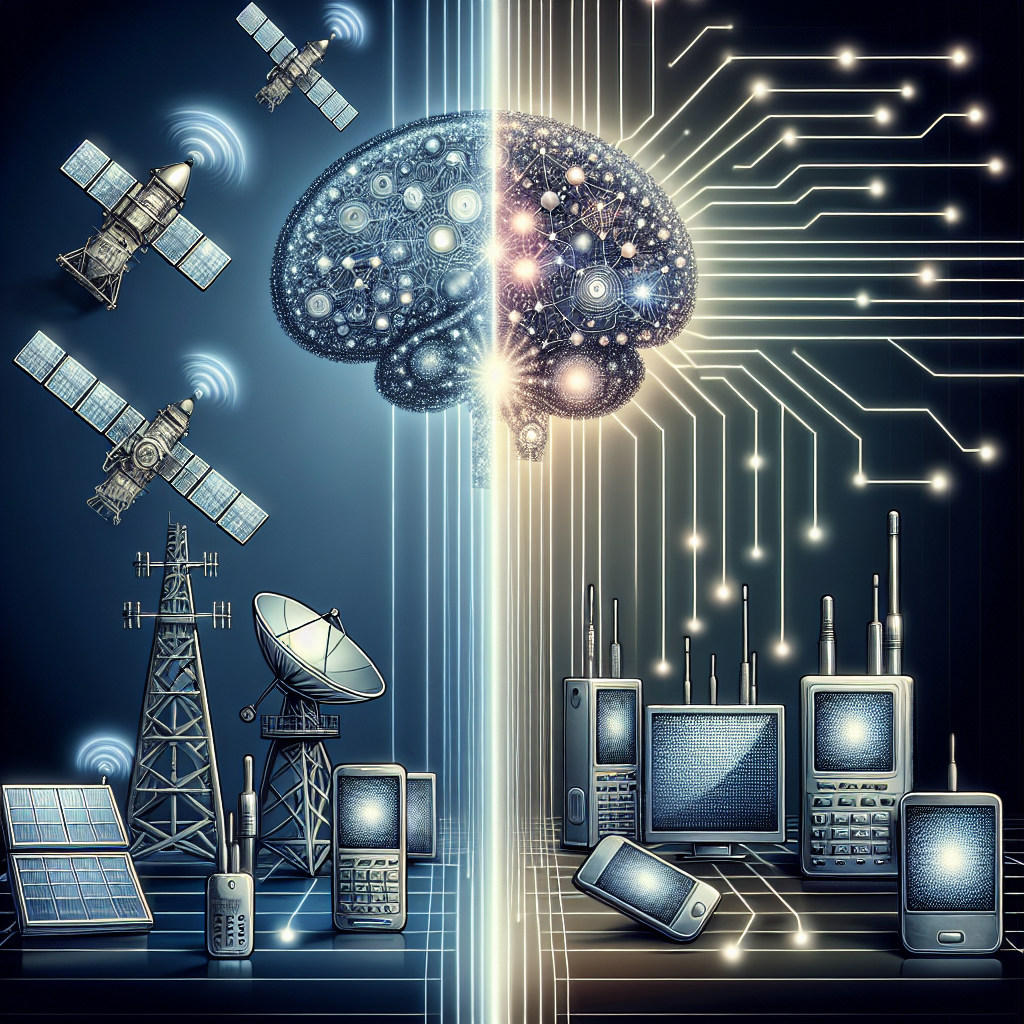Telecommunications has come a long way since the invention of the telephone by Alexander Graham Bell in 1876. Over the years, we have seen incredible advancements in technology that have revolutionized the way we communicate with each other. From landlines to cellphones, from dial-up internet to high-speed broadband, the telecommunications industry has continually evolved to meet the demands of an increasingly connected world.
One of the most exciting developments in the field of telecommunications is the integration of artificial intelligence (AI) technology. AI has the potential to transform the way we communicate by making our devices smarter, more efficient, and more responsive to our needs. In this article, we will explore the future of telecommunications with AI and discuss how this technology is shaping the way we interact with each other.
AI in Telecommunications
AI is a powerful technology that enables machines to learn from data, recognize patterns, and make decisions without human intervention. In the field of telecommunications, AI can be used to improve network efficiency, enhance customer service, and personalize user experiences. Here are some of the ways AI is being integrated into telecommunications:
1. Network Optimization: AI algorithms can analyze network data in real-time to identify bottlenecks, predict traffic patterns, and optimize network resources. This can help telecommunications companies improve network performance, reduce downtime, and deliver better service to customers.
2. Customer Service: AI-powered chatbots and virtual assistants are being used by telecommunications companies to provide instant support to customers. These virtual agents can answer common queries, troubleshoot technical issues, and even process payments, all without human intervention. This not only improves customer satisfaction but also reduces the workload on customer service agents.
3. Predictive Maintenance: AI can be used to predict equipment failures before they occur, allowing telecommunications companies to schedule maintenance proactively and prevent costly downtime. By analyzing historical data and monitoring equipment in real-time, AI algorithms can detect patterns that indicate potential issues and alert technicians to take action.
4. Personalized Services: AI can analyze user behavior, preferences, and usage patterns to deliver personalized services to customers. For example, AI algorithms can recommend relevant content, tailor pricing plans to individual needs, and predict when a customer is likely to churn. This helps telecommunications companies improve customer retention and increase revenue.
The Future of Telecommunications with AI
The future of telecommunications with AI is bright, with many exciting developments on the horizon. Here are some of the ways AI is expected to shape the future of telecommunications:
1. 5G Networks: The rollout of 5G networks is expected to revolutionize telecommunications by enabling faster speeds, lower latency, and greater connectivity. AI will play a crucial role in managing the complexity of 5G networks, optimizing performance, and delivering new services to users.
2. Internet of Things (IoT): The proliferation of IoT devices, such as smart home appliances, wearables, and connected vehicles, is creating new opportunities for telecommunications companies. AI can help manage the massive amounts of data generated by IoT devices, analyze sensor data in real-time, and automate decision-making processes.
3. Edge Computing: Edge computing is a distributed computing model that brings computation and data storage closer to the devices that generate and consume data. AI algorithms can be deployed at the edge to process data locally, reduce latency, and improve the performance of applications that rely on real-time data processing.
4. Augmented Reality (AR) and Virtual Reality (VR): AR and VR technologies are becoming increasingly popular for applications such as gaming, entertainment, and remote collaboration. AI can enhance the user experience by providing real-time feedback, recognizing gestures, and personalizing content based on user preferences.
5. Quantum Computing: Quantum computing is a revolutionary technology that has the potential to solve complex problems that are beyond the capabilities of classical computers. AI algorithms can leverage quantum computing to improve the performance of machine learning models, optimize telecommunications networks, and accelerate data processing tasks.
FAQs
Q: How will AI impact job opportunities in the telecommunications industry?
A: While AI has the potential to automate certain tasks and processes, it is also creating new job opportunities in areas such as data science, AI development, and cybersecurity. Telecommunications companies will need skilled professionals to design, implement, and maintain AI systems, as well as to analyze data and extract insights from it.
Q: Will AI replace human customer service agents?
A: AI-powered chatbots and virtual assistants are becoming increasingly common in the telecommunications industry, but they are unlikely to replace human customer service agents entirely. While AI can handle routine queries and tasks, human agents are still needed for complex issues, emotional support, and personalized interactions with customers.
Q: How can telecommunications companies ensure the privacy and security of customer data when using AI?
A: Telecommunications companies must implement robust data protection measures, such as encryption, access controls, and data anonymization, to safeguard customer data when using AI. It is also important to comply with data privacy regulations, such as the General Data Protection Regulation (GDPR), and to be transparent with customers about how their data is being used.
Q: What are the ethical considerations of using AI in telecommunications?
A: Ethical considerations of using AI in telecommunications include issues such as bias in algorithms, privacy violations, and job displacement. Telecommunications companies must ensure that AI systems are fair, transparent, and accountable, and that they are used to benefit society as a whole.
In conclusion, the future of telecommunications with AI is full of possibilities and opportunities. AI has the potential to transform the way we communicate, making our devices smarter, more efficient, and more personalized. By leveraging AI technology, telecommunications companies can improve network performance, enhance customer service, and deliver innovative services to users. As we continue to explore the potential of AI in telecommunications, it is important to consider the ethical implications and ensure that AI is used responsibly to benefit society as a whole.

